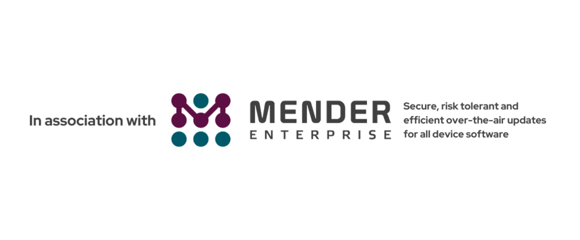Maritime and shipping technology services company MacGregor uses robust and secure OTA software updates from Mender.io as part of its IoT device management and edge devices strategy.
The overarching theme is digital transformation takes different forms in different industries and IoT device management and edge devices often take centre stage. The Device Chronicle interviewed Joerg Peschke, Director, Drives and Controls, at the MacGregor Group to learn about digital transformation, IoT device management, edge devices and OTA software updates for Yocto in maritime.
Maritime and shipping is an industry that can be conservative and can trail other industries when it comes to digital transformation. The industry is lagging with few standards in digital, mostly governed by national interests and regulations that can be often contradicting and confusing. But some companies are leading the digital change and it is focussed on IoT device management, edge devices and OTA software updates.
Digital transformation involves edge devices
For instance, technology providers are working to smooth the transition to truly digital through technology partnership and one of these is MacGregor. The MacGregor Group is part of the Cargotec Group with annual revenues of €3.7 Bn. MacGregor counts among its customers the great logistics and vessel fleet companies and shipyards of the world including Maersk, Hapag Lloyd, Dynacom and Oldendorff to name but a few. Furthermore, MacGregor has an executive management that has embraced the digital transformation. Digital is one major part of the strategy, and the overall vision focuses on creating “intelligent solutions” for customers. The company’s digital efforts also support sustainability which is another key pillar of the strategy.
IoT device management and edge devices strategy
Joerg Peschke is an electrical engineer by training and sits in a global R&D group. This group is not just concerned with the digital transformation efforts of its customers but also of MacGregor itself. It is an equipment manufacturer going through a rather typical digital transformation in the move to add service selling to unit selling. Moreover, Joerg remarks: “The efficiency improvements targeted at MacGregor operations are also for their customers. The general rule is no digital projects proceed without a customer in place. So it is something of a shared journey then between the company and its customers.”

Edge devices under consideration
In essence, MacGregor’s journey involves trying to introduce solution sales. This is a new challenge for the company’s sales engineers who have been accustomed to selling H-covers and cranes. Joerg adds that the strategic approach involves “adding value to the physical products by adding condition-based monitoring, and looking to optimise the customers’ assets.” Overall, Joerg looks after the underlying technology strategy for the group. The focus of underlying technology is IoT device management and edge devices, Augmented Reality and Virtual Reality and how advances in these technologies can help improve operations, communications and productivity aboard sea vessels.
Digital Twin
The company operates a full digital twin of its equipment so it can have a closer collaboration with its customers and help them solve problems quickly. IoT device management, edge devices and OTA software updates are critical pieces of infrastructure to enable this. Furthermore, simulation services with VR and physical engine software are also delivered. And on top of the equipment delivery, MacGregor equips its customers and service engineers with proper digital tools: These include technical drawings, collaboration software and professional advice. In the background, an IoT device management platform helps their customers exploit the benefits of edge devices and also helps their engineers to work more efficiently, travel less and improve processes. There are also functionalities in the devices to help the engineers run simulations and predictions.
Narrowband IoT
In this paragraph, we see that the biggest technical challenge for IoT and device management at sea is the very obvious connectivity issues faced. Connectivity realised by satellite comes with the drawbacks of relatively narrow bandwidth and high costs. This creates the necessity for edge computing, as all raw data cannot be pushed to the cloud. Machine Learning is also needed on the edge devices. On top of this, security is a huge concern. Furthermore, Joerg points out that many customers do not have the expertise required in security. MacGregor must help its customers in this regard, often stepping into “uncharted waters” in terms of the challenges faced. Unfulfilled promises from technology can also be an issue. For Joerg, there have too many over-inflated promises made about the potential business impact of the technology in the past. As a result, customer expectations now need to be managed carefully. “Platforms must be tangible and their benefits properly elaborated and proven.” Joerg adds “We look for open minded customers who are collaborative, who opt for pilots and who then will take steps to spread this technology. Operations on vessels are so different to IT so you need careful collaboration.”
Need for openness
Furthermore, a certain amount of openness is needed for successful collaboration. For Joerg, this means investments in platforms with open interfaces and RESTful APIs. Fortunately, MacGregor is being very open with its device interfaces. It manages its customers devices in a standardised way with processes behind. The company is also able to port the management of the devices to the customers if they want that. The management of the devices needs to be very reliable and sustainable since there are connectivity issues on the vessels all of the time. This can involve the data transmission breaking up, extremely narrow bandwidth, constant need for the reconnection of edge devices based on satellite broadband and a high tolerance for lots of disturbances to the connection.
Cost effective edge device strategy
Retrofitting devices is also part of MacGregor’s device management strategy because the market is financially difficult and often complete on-vessel IoT technology overhauls cannot be justified by the customer. “We need hardware that can connect to the existing production level controllers (PLCs).”
Focus on standards
Also, the company requires high levels of process standardisation and plug and play installation for the edge devices. Joerg remarks “There are excellent mechanical engineers on board but the IoT device management solution still needs to be idiot proof. We need hardware that is very easy to connect to their devices and to the vessels’ network.
OTA software updates
Finally, the company also needs a high degree of central control both to enable the devices correctly but also to troubleshoot quickly from a distance if something goes wrong.” MacGregor is using a robust and secure OTA software update solution called Mender.io to help them maintain control of their edge devices and keep their customers’ operations sailing smoothly. We wish Joerg, his colleagues and customers well as they continue their digital journey.
For another case study on IoT device management, edge devices and OTA software updates read how German manufacturer Achenbach Buschhütten GmbH & Co. KG do it.

